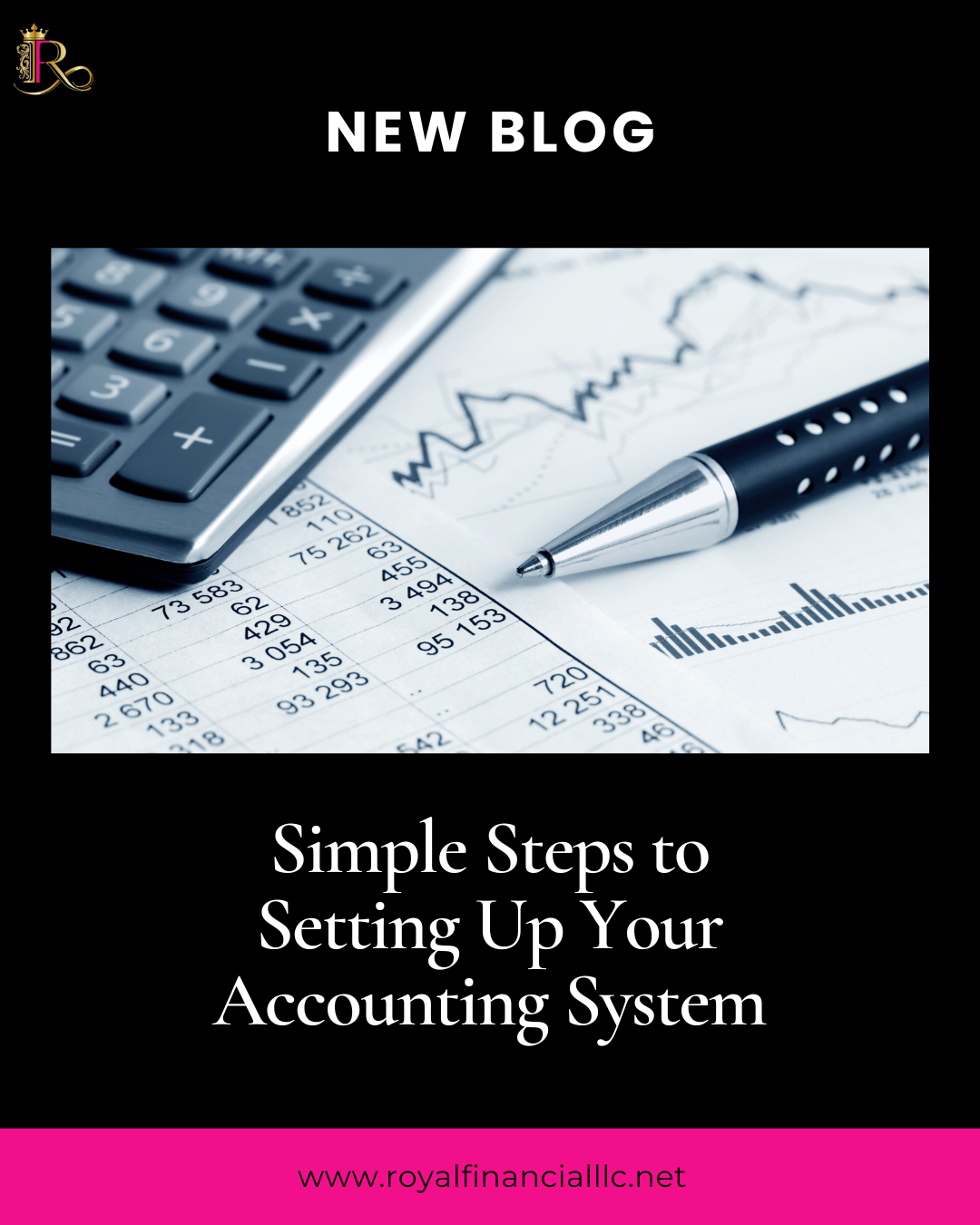
Getting Your Accounting System Up and Running Doesn’t Have to Be Complicated
Share
Starting an accounting system can seem daunting, especially if you’re new to managing business finances. However, the process doesn’t have to be as complex as it may appear. By breaking it down into simple, actionable steps, you can create a reliable system that keeps your financials organized and your business on track. Let’s dive into how to get started.
1. Understand Your Business Needs
Every business has unique financial requirements. Start by identifying your business's size, structure, and specific accounting needs. For example:
-
Are you a sole proprietor, or do you have employees?
-
Do you need to track inventory or just expenses and income?
-
What financial reports will help you make informed decisions?
Having clarity on these aspects will guide you in choosing the right tools and processes.
2. Choose the Right Accounting Software
Thanks to technology, there are numerous accounting software options that make managing finances easier. Popular options include QuickBooks, Xero, and Wave. When selecting a platform, consider factors such as:
-
Scalability for future growth
-
Ease of use
-
Integration with other tools like payroll and inventory systems
Cloud-based software is an excellent choice for flexibility and real-time access to your data.
3. Set Up a Business Bank Account
A dedicated business bank account is essential for separating personal and business finances. This separation not only simplifies accounting but also enhances professionalism and makes tax preparation much easier.
4. Develop a Chart of Accounts
A chart of accounts organizes your financial data into categories like income, expenses, assets, and liabilities. Setting this up correctly from the start ensures accurate tracking and reporting. Most accounting software will guide you through creating a chart of accounts, but you may want to consult a professional for customization.
5. Implement Record-Keeping Best Practices
Good record-keeping is the backbone of a successful accounting system. Ensure you:
-
Save all receipts and invoices.
-
Use digital tools to scan and store documents.
-
Regularly reconcile your accounts to catch discrepancies early.
6. Automate Where Possible
Automation can save time and reduce errors. Many accounting systems allow you to automate recurring tasks such as invoicing, expense tracking, and bank reconciliations. Take advantage of these features to streamline your processes.
7. Monitor Cash Flow Regularly
Cash flow management is vital to your business’s health. Use your accounting system to monitor income and expenses, ensuring you have enough liquidity to cover your obligations. Create budgets and financial forecasts to stay proactive.
8. Seek Professional Help When Needed
If you’re unsure about any part of the setup, consider hiring an accountant or bookkeeper. Their expertise can save you time and prevent costly mistakes.
Conclusion
Setting up an accounting system doesn’t have to be overwhelming. By taking it step by step and utilizing the right tools and resources, you can create a system that supports your business’s growth. Remember, the goal is to establish a process that’s efficient, accurate, and easy to maintain. With a solid accounting foundation, you’ll be well-equipped to focus on what you do best—running your business.
